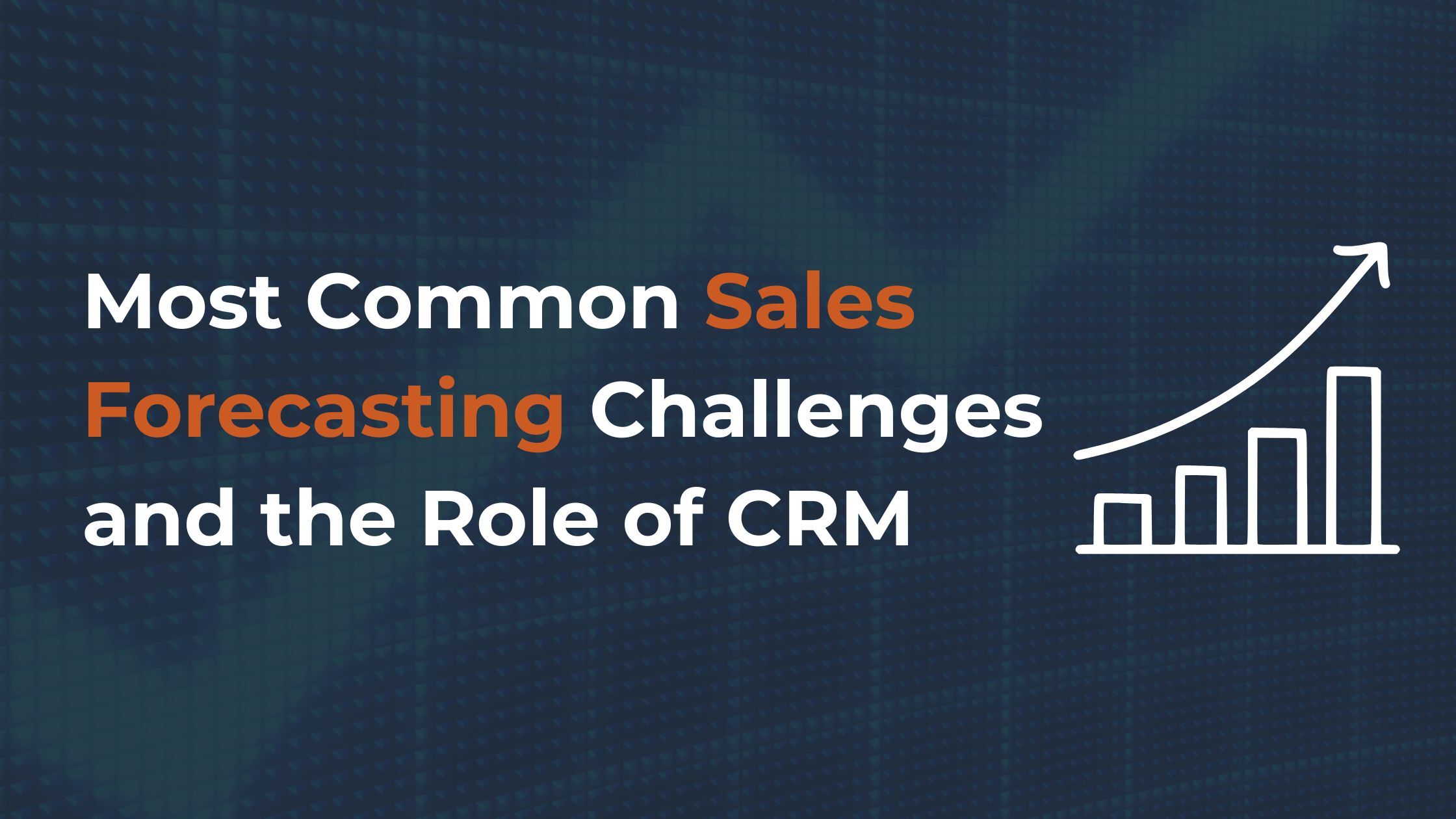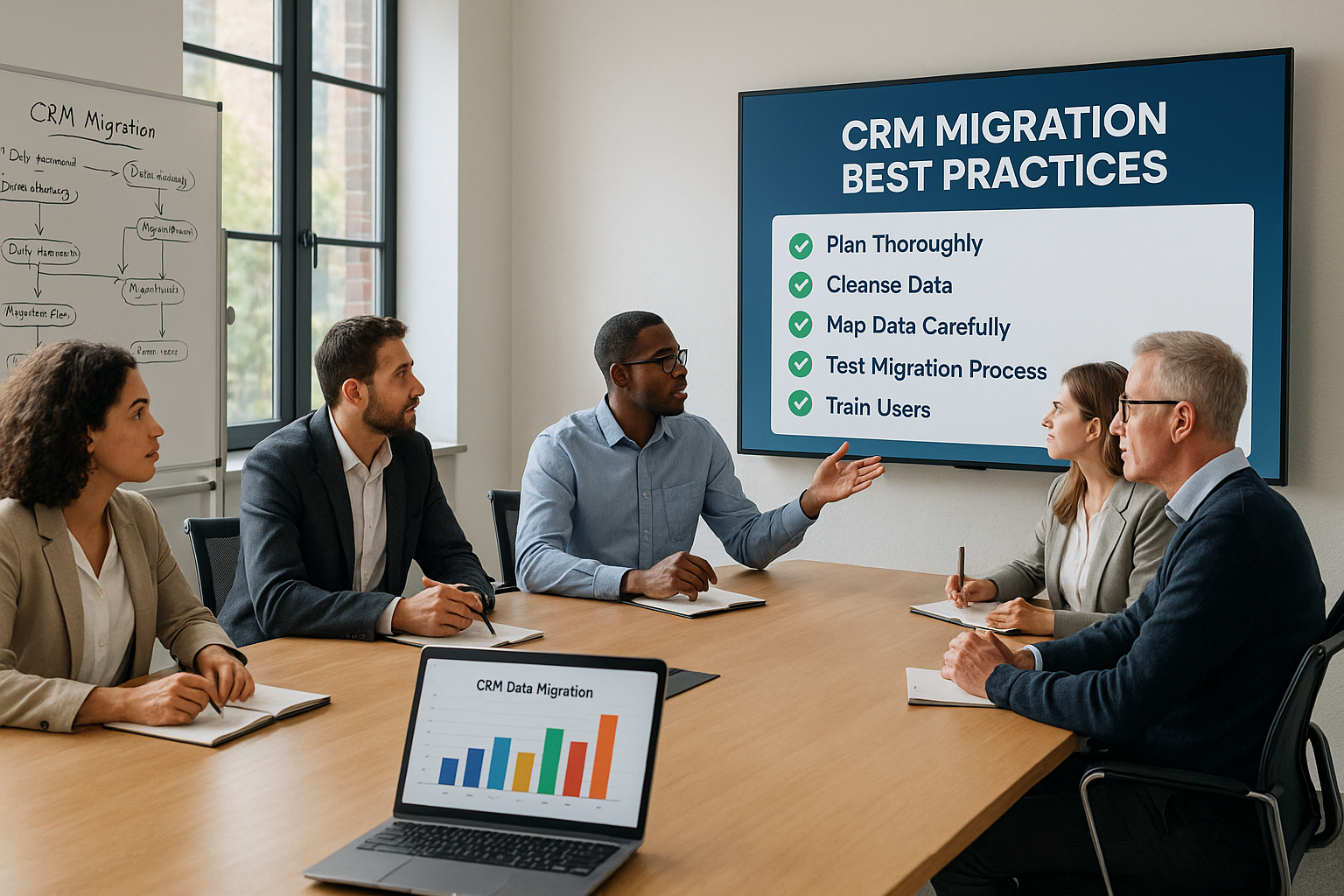Table of Content
- What Is Sales Forecasting and Why It’s Critical for Business Success
- The Most Common Challenges of Forecasting Sales Accurately
- Why Some Businesses Fail to Forecast Sales Effectively
- The Role of CRM Systems in Improving Sales Forecasting Accuracy
- How Bad Data Quality Can Ruin Your Sales Forecasts
- How to Overcome Sales Forecasting Challenges with the Right Tools and Mindset
- FAQ
What Is Sales Forecasting and Why It’s Critical for Business Success
What is sales forecasting? Sales forecasting is the process of estimating future sales revenue over a specific period (weekly, monthly, quarterly, or annually). These predictions are typically based on historical data, market trends, current pipeline health, and the performance of individual sales reps or teams.
Accurate sales forecasting is more than just a numbers game. It directly impacts a company’s strategic decisions. From budgeting and resource allocation to inventory planning and hiring, forecasts help leaders avoid guesswork and make informed, data-driven moves.
The Difference Between Forecasting and Reporting

While both forecasting and reporting are essential to sales operations, they serve different purposes.
- Sales reporting looks at past performance. It tells you what happened, how many deals were closed, which reps performed best, and what revenue was generated in a given period.
- Sales forecasting looks ahead. It predicts what is likely to happen based on current trends, lead quality, pipeline velocity, and other dynamic factors.
Reporting is like a rearview mirror and forecasting like the GPS. It’s the difference between knowing where you’ve been and planning where you're going.
Why Some Businesses Still Neglect Sales Forecasting
Why do some businesses fail to create sales forecasts? Despite its importance, many businesses still neglect or underinvest in sales forecasting. Common reasons include:
- Lack of time or expertise: Smaller businesses, in particular, may lack dedicated sales operations teams or the tools to forecast sales efficiently.
- Reliance on gut feeling: Some companies still depend on intuition or best guesses, especially if they’ve seen early success without structured processes.
- Data quality issues: If CRM data is incomplete, outdated, or inconsistent, building an accurate forecast becomes nearly impossible, leading some teams to abandon the process altogether.
- Unclear processes: Without standardized forecasting models or methodologies, different teams may produce wildly inconsistent results, which undermines confidence in the process.
Neglecting forecasting hurts future planning and creates blind spots that can stall growth and put a business at risk.
The Most Common Challenges of Forecasting Sales Accurately
Despite its strategic value, sales forecasting often has some challenges. Even the most experienced teams struggle to deliver consistently accurate forecasts due to a mix of internal and external factors. Let’s look at two of the most common obstacles businesses face when trying to forecast sales with precision.
Incomplete Data and Outdated Systems
One of the challenges of forecasting is bad data. Accurate forecasting depends on clean, complete, and current data. Unfortunately, many organizations operate with CRMs or spreadsheets that are riddled with:
- Missing or inconsistent entries
- Poorly tracked deal stages
- Manual data input errors
- Limited visibility into buyer behavior or pipeline health
Outdated systems make matters worse. Legacy tools often lack automation, real-time syncing, or the flexibility to adapt to changing sales processes. As a result, teams are left working with stale snapshots instead of live insights.
This is where integration platforms like SyncMatters play a critical role. By connecting CRMs with other key business tools, like marketing automation, ERP, or support platforms, SyncMatters ensures that sales data flows seamlessly and stays up-to-date across the entire customer journey.
Misaligned Goals Between Sales and Leadership
Another major problem of the difficulties of sales forecasting is the disconnect between frontline sales teams and company leadership. Sales reps tend to be conservative in their forecasts, wanting to underpromise and overdeliver. Leadership, on the other hand, may pressure teams to forecast sales aggressively to meet investor or board expectations.
This misalignment creates misalignment in several ways:
- Forecasts get inflated or sandbagged depending on who’s reporting and why
- Lack of trust develops between departments, undermining collaboration
Without a shared definition of success and a unified forecasting methodology, it’s nearly impossible to produce forecasts that everyone can rely on and act upon.
Why Some Businesses Fail to Forecast Sales Effectively
Even with the right intentions, many businesses still struggle to produce accurate, actionable sales forecasts. One of the most overlooked reasons behind this failure is the absence of a standardized, repeatable forecasting process.
Lack of a Standardized Forecasting Process
Sales forecasting should be more than a last-minute spreadsheet exercise. Yet, many organizations rely on ad-hoc methods where each rep or manager uses their own logic, tools, and assumptions. Without a consistent process, forecasting becomes:
- Unreliable: Different teams produce different results, making it hard to trust the numbers.
- Inefficient: Time is wasted reconciling reports or debating whose data is more accurate.
- Non-actionable: Leadership lacks the confidence to make bold decisions based on unclear forecasts.
A standardized forecasting process typically includes clear definitions for deal stages, uniform criteria for probability scoring, consistent data input rules, and regular cadence for forecast updates. Without this foundation, sales forecasts are built on shaky ground.
This is where CRM systems can help. When forecasting models are built into your CRM and kept consistent across systems, it’s easier to maintain accuracy and accountability. Everyone operates from the same playbook, and leadership gets a clearer picture of what’s really coming down the pipeline.
The Role of CRM Systems in Improving Sales Forecasting Accuracy

Modern CRM systems are powerful forecasting tools that help sales teams replace guesswork with data-backed predictions. By organizing customer information, tracking deal progress, and providing real-time pipeline visibility, CRMs lay the groundwork for more reliable forecasts.
How CRM Centralizes Data for Better Predictions
One of the biggest challenges of forecasting is scattered, inconsistent data. A CRM solves this by storing all sales-related information (leads, opportunities, deal stages, communications, and historical sales patterns).
When all data lives in one place, sales teams can:
- Spot trends based on historical performance
- Identify bottlenecks that slow deal progression
- Use consistent metrics to estimate close probabilities
- Centralized data ensures that forecasting models are based on reality, not fragmented or outdated information.
Benefits of Integrating Multiple CRM Tools and Platforms
In many organizations, sales data isn’t limited to one CRM; it’s spread across marketing platforms, support systems, e-commerce tools, and ERP software.
By integrating CRMs with other business systems, using solutions like SyncMatters, companies can:
- Ensure real-time synchronization of customer and deal information
- Reduce manual entry errors by automating data transfer
- Gain a complete 360-degree view of each customer and pipeline stage
- Improve cross-department alignment, so marketing, finance, and sales work from the same insights
With integrated systems, forecasts reflect the full customer journey, not just what’s in the sales team’s CRM. This leads to more precise predictions and better strategic planning.
How Bad Data Quality Can Ruin Your Sales Forecasts
When a CRM is filled with outdated, incomplete, or inaccurate information, the resulting forecasts can quickly become unreliable. Bad data often leads to inflated revenue expectations when deals are marked as “likely to close” despite being stalled, underestimated demand when important leads are missing, or poor resource allocation when deal timelines are inaccurate. These errors don’t just affect sales; they can impact production planning, marketing budgets, and overall business strategy.
The good news is that these difficulties of sales forecasting can be identified and corrected before they distort decision-making. Regular CRM audits help identify duplicate records that artificially inflate pipeline numbers, outdated contact details that block follow-ups, incomplete deal information that skews projections, and inconsistent stage updates that misrepresent pipeline health.
Platforms like SyncMatters make maintaining high data quality far easier. By synchronizing information across systems, flagging inconsistencies, and updating records in real time, they help businesses keep their data accurate and actionable. When the foundation of your forecasting process is strong, leadership can make confident, well-informed decisions.
How to Overcome Sales Forecasting Challenges with the Right Tools and Mindset

Using CRM and AI-Driven Forecasting Models
A well-implemented CRM is the foundation of reliable forecasting by centralizing customer data, tracking deal progress, and ensuring that every interaction is recorded. When AI is layered on top, forecasting becomes even more precise. AI-powered models can analyze historical trends, current pipeline velocity, seasonality, and even external market conditions to predict outcomes with greater accuracy than manual methods.
For example, AI can identify subtle patterns, such as which lead sources are more likely to convert or which deal stages typically stall. This allows sales teams to adjust strategies proactively.
Creating a Culture of Accountability in Forecasting
Even the best tools won’t improve forecasting if the people using them aren’t committed to accuracy. Creating a culture of accountability means setting clear expectations for how forecasts are created, updated, and reviewed that eliminates other challenges of forecasting. Sales reps need to understand that accurate forecasting is enabling the business to plan effectively, allocate resources wisely, and serve customers better.
Leaders can encourage this mindset by regularly reviewing forecasts with their teams, providing constructive feedback when projections are off, and celebrating accurate predictions just as much as big wins. When everyone treats forecasting as a shared responsibility, the entire organization benefits from clearer insights and better business decisions.
FAQ
Why do some businesses fail to create sales forecasts?
Why do some businesses fail to forecast sales? Because many businesses lack a standardized process, don’t have reliable data, or rely on outdated tools. In some cases, forecasting is deprioritized due to time constraints or a belief that gut instinct is “good enough.” Without consistent methods and accurate data, forecasts are either ignored or quickly lose credibility.
What’s the biggest challenge in forecasting sales?
The biggest challenge of all difficulties of sales forecasting is data quality. Inaccurate, incomplete, or outdated information leads to unreliable forecasts, no matter how advanced the tools.
Can a CRM system improve forecast accuracy?
Yes. A CRM centralizes all customer and sales data, making it easier to track deals, analyze trends, and apply consistent forecasting models. When kept up to date, it eliminates guesswork by providing a clear, real-time view of the sales pipeline.
How often should a business update its sales forecast?
At a minimum, businesses should update their forecasts monthly. However, in high-volume sales environments, weekly updates may be necessary to account for new opportunities, stalled deals, or sudden market shifts.
How does CRM integration help in forecasting?
CRM integration connects sales data with other business systems, so all information flows in real time. This creates a complete, 360-degree view of the customer journey and ensures forecasts are based on the most current, comprehensive dataset possible. Solutions like SyncMatters make this process seamless by syncing multiple platforms.




